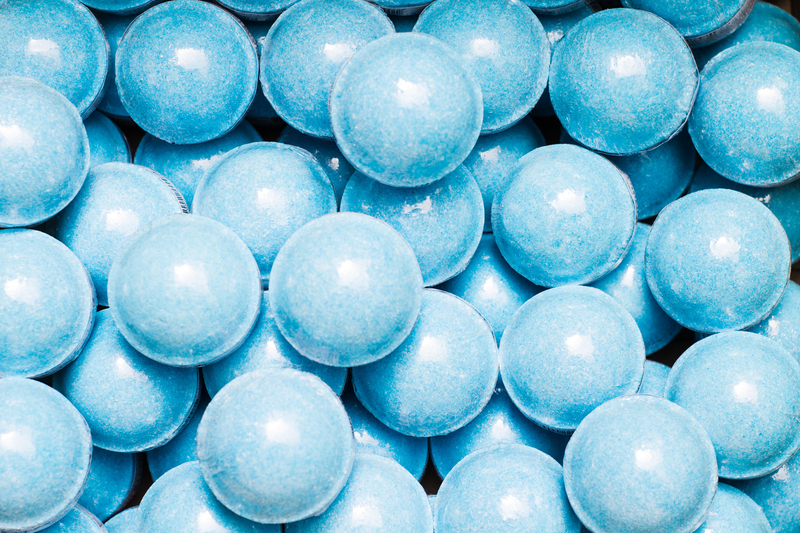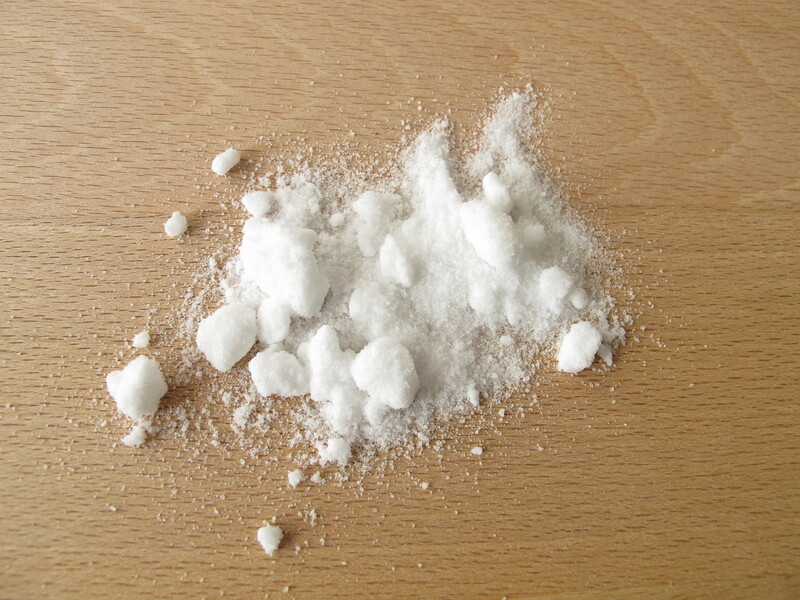Mould-Free Window Sills: A Practical Cleaning Guide
Posted on 26/08/2025
Mould-Free Window Sills: A Practical Cleaning Guide
Maintaining clean and mould-free window sills is essential for a healthy home environment. Mould not only detracts from your home's aesthetics but also presents serious health risks, including allergies and respiratory issues. This practical guide will walk you through effective, easy-to-follow cleaning techniques, prevention tips, and maintenance strategies to ensure your window sills remain spotless and free from the clutches of mould.
Why Keeping Window Sills Mould-Free Matters
Unattended window sill mould is more than just unsightly. It can degrade air quality, trigger allergies, and even cause structural damage to your windows and walls. The high moisture levels commonly found around windows make them prime spots for mould growth, especially in humid environments or poorly ventilated rooms.
- Health benefits: Reduces risk of allergies, asthma, and respiratory infections.
- Prevents damage: Preserves paint, wood, and window frames from rot or decay.
- Improves aesthetics: Keeps your home looking clean and well-maintained.
- Enhances indoor air quality: Minimizes airborne spores that can affect your health.

What Causes Mould on Window Sills?
Understanding the root causes of mould on window sills is vital for effective prevention and long-lasting cleanliness. Here are common triggers:
- Condensation: Moist air meets cold window glass, leading to water droplets that accumulate on sills.
- Poor ventilation: Stagnant, humid air doesn't circulate, creating ideal conditions for mould spores to thrive.
- Leaky windows: Inefficient seals can allow rainwater or outside moisture to penetrate.
- Neglected cleaning: Dust and dirt provide nutrition for mould, so unclean sills are more prone to growth.
Regular inspection and routine cleaning are your first defence against persistent mould problems.
Essential Supplies for Mould-Free Window Sill Cleaning
Before tackling the cleaning process, gather the following tools and cleaning agents to ensure you effectively remove and prevent mould on your window sills:
- Protective gloves and mask: Safety first when handling mould or strong cleaning solutions.
- Soft scrubbing brush or old toothbrush: For reaching crevices and scrubbing stains.
- Microfiber cloths: Excellent for wiping surfaces clean and dry.
- Spray bottle: For applying homemade or commercial cleaners.
- Commercial mould remover or natural alternatives (e.g. white vinegar, baking soda, hydrogen peroxide).
- Vacuum cleaner: For removing loose dust before damp cleaning.
Step-by-Step Guide: Cleaning Mould from Window Sills
-
Start with Safety
Wear gloves and a mask to protect from spores. Open nearby windows for proper ventilation. -
Remove Loose Debris
Vacuum dust and dirt using a nozzle attachment, especially in corners and crevices. This prevents spreading mould spores during wet cleaning. -
Apply Your Cleaner
Spray affected areas with your chosen mould remover or a DIY solution:- Vinegar: Fill a spray bottle with undiluted white vinegar. Spray and let sit for at least 30-60 minutes.
- Hydrogen peroxide (3%): Apply directly and leave for 10-15 minutes. Avoid mixing with vinegar to prevent chemical reactions.
- Baking soda: Create a paste with water and spread over the mouldy area. Let it fizz for a few minutes.
-
Scrub Thoroughly
Use a soft brush or toothbrush to gently scrub away the mould. Pay special attention to edges, joints, and cracks. -
Wipe Clean and Dry
Use a damp microfiber cloth to remove cleaning residue and dead mould. Then, thoroughly dry the surface to prevent mould from returning. -
Dispose Safely
Throw away used cloths and gloves or wash them in hot water. Clean up and disinfect your tools.
Preventative Measures for Mould-Free Sills
Once you've achieved clean window sills, preventing future mould growth is key. Here are some proven mould prevention tips:
- Ventilate regularly: Open windows daily to circulate fresh air and reduce humidity.
- Use dehumidifiers: Especially in bathrooms, kitchens, and basements, to keep humidity below 60%.
- Check for leaks: Inspect window seals and frames for gaps or cracks. Repair promptly.
- Wipe condensation: Each morning, use a dry cloth to remove moisture from sills and glass.
- Choose mould-resistant paint: Painting window frames and sills with anti-mould paint can add long-term protection.
- Regular cleaning schedule: Wipe down sills weekly to remove dust and detect early signs of mould.
Natural vs. Chemical Cleaners: Which is Best?
There are many mould removal products available, but not all are suitable for your home. Here's what you should consider:
Natural Solutions
- Vinegar: Kills up to 82% of mould species and neutralizes odours.
- Baking soda: Safe on most surfaces and also helps absorb moisture.
- Hydrogen peroxide: Effective against mould and bacteria, without harsh fumes or toxic residues.
Chemical Products
- Commercial sprays: Fast and powerful, but can contain strong chemicals unsafe for pets or children.
- Bleach: Kills surface mould on non-porous sills but doesn't penetrate deeper layers on wood or painted surfaces.
Tip: If sensitivities or pets are a concern, opt for natural methods before escalating to chemical treatments.
How to Deep Clean Stubborn Mould from Window Sills
If surface cleaning doesn't resolve severe or recurring mould, try these steps:
- Repeat Cleaning: Persistence pays off. Reseal and repeat your cleaning process as needed.
- Sanding (for wood): Sand away deeply embedded mould, then refinish with a protective anti-mould sealant or paint.
- Replace caulking: Carefully remove and renew cracked or mouldy window seals.
- Seek professional help: For black mould (toxic, large areas, or recurring contamination), consult a certified mould remediation expert.
Long-Term Maintenance: Keeping Window Sills Mould-Free
- Monitor humidity in your home with a hygrometer.
- Schedule seasonal inspections for your windows and sills.
- Trim exterior plants that may trap moisture close to windows.
- Upgrade insulation to reduce chances of condensation inside.
Consistency is the secret to maintaining mould-free window sills. A little effort each week will save you from major cleaning projects down the line.
Common Mistakes to Avoid When Cleaning Mouldy Window Sills
Even the keenest homemakers can make missteps. Here's what not to do:
- Ignoring the root cause: Cleaning without addressing moisture or leaks means mould will return.
- Dry brushing or sweeping mould: This releases spores into the air--always dampen the area first!
- Mixing cleaners: Never combine bleach with vinegar or ammonia. This creates dangerous fumes.
- Neglecting protective gear: Always use gloves and a mask to reduce exposure to spores and chemicals.
- Incomplete drying: Any lingering moisture invites mould back. Dry thoroughly after cleaning.
Frequently Asked Questions: Mould-Free Window Sills
How often should I clean my window sills to prevent mould?
Weekly dusting and monthly deep cleaning are ideal, but homes in damp climates may require more frequent attention.
Can I paint over mould to hide it?
Never paint over mould! The infestation will persist and can damage wood and paint integrity. Always clean and treat mould first.
Is black mould on window sills dangerous?
Some species of black mould release toxins (mycotoxins), which are hazardous, especially to children, elderly, or immune-compromised people. Professional removal is strongly advised for extensive contamination.
Are certain window sill materials more mould-resistant?
Yes. Vinyl, plastic, and aluminium sills resist moisture better than wood. Wooden sills must be sealed and painted for protection.

When to Call a Professional for Window Sill Mould Removal
If you encounter one or more of these signs, it's time for expert help:
- Mould covers more than a square metre.
- Mould keeps returning after thorough cleaning.
- Strong, musty odours persist even after cleaning.
- You or your family suffer from increased allergy symptoms.
A professional will identify hidden leaks, treat the root causes, and restore a safe environment.
Conclusion: Achieve Spotless, Mould-Free Window Sills Year-Round
A clean, mould-free window sill doesn't just look appealing--it's essential for a healthy, happy home. By practicing preventative maintenance, choosing the right cleaning methods, and addressing sources of moisture, you can keep mould problems at bay for good. Remember, frequent attention and quick action will ensure your window sills remain pristine no matter the season.
Share Your Mould-Free Journey
Have a tip for keeping window sills spotless, or a cleaning hack that worked for you? Share your ideas below to help others create a healthier living space!




